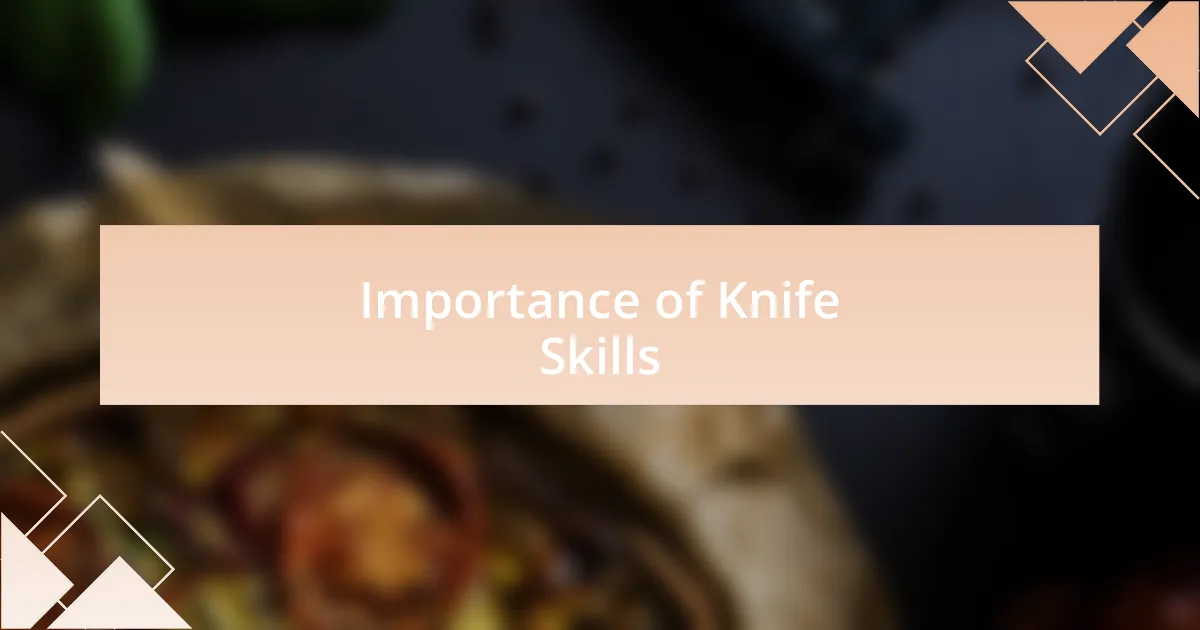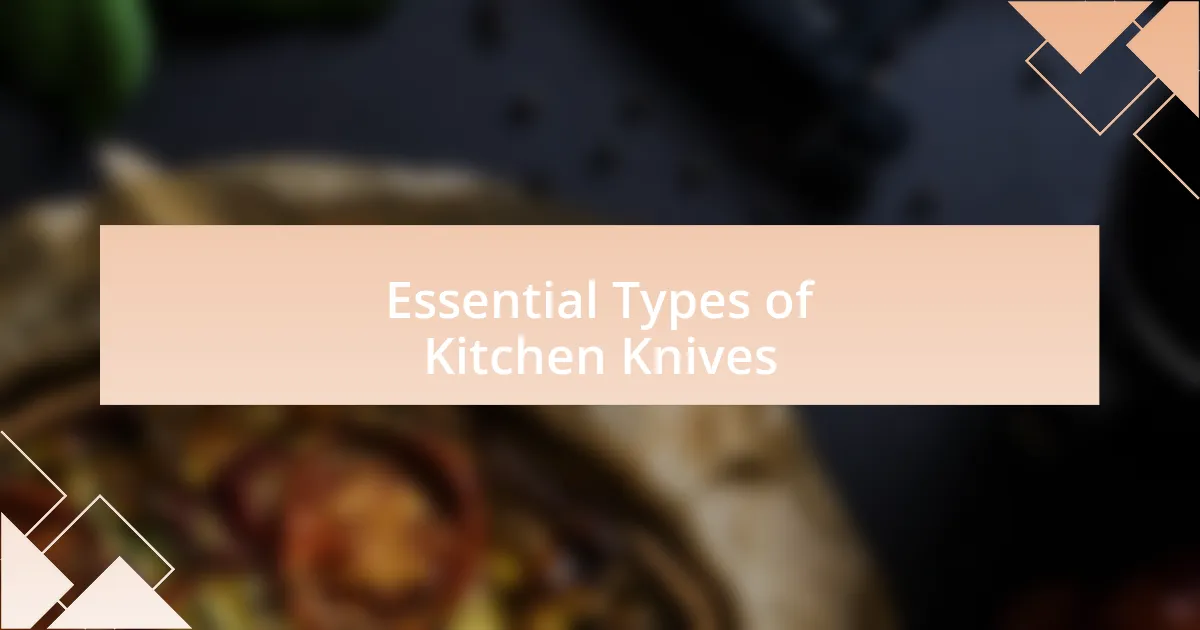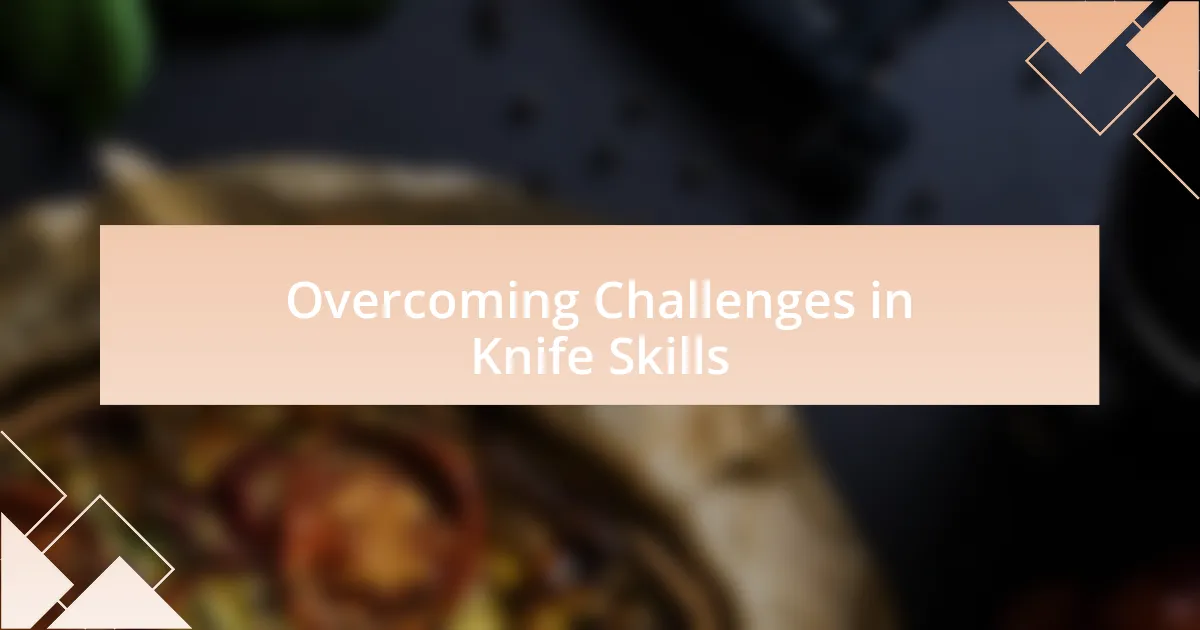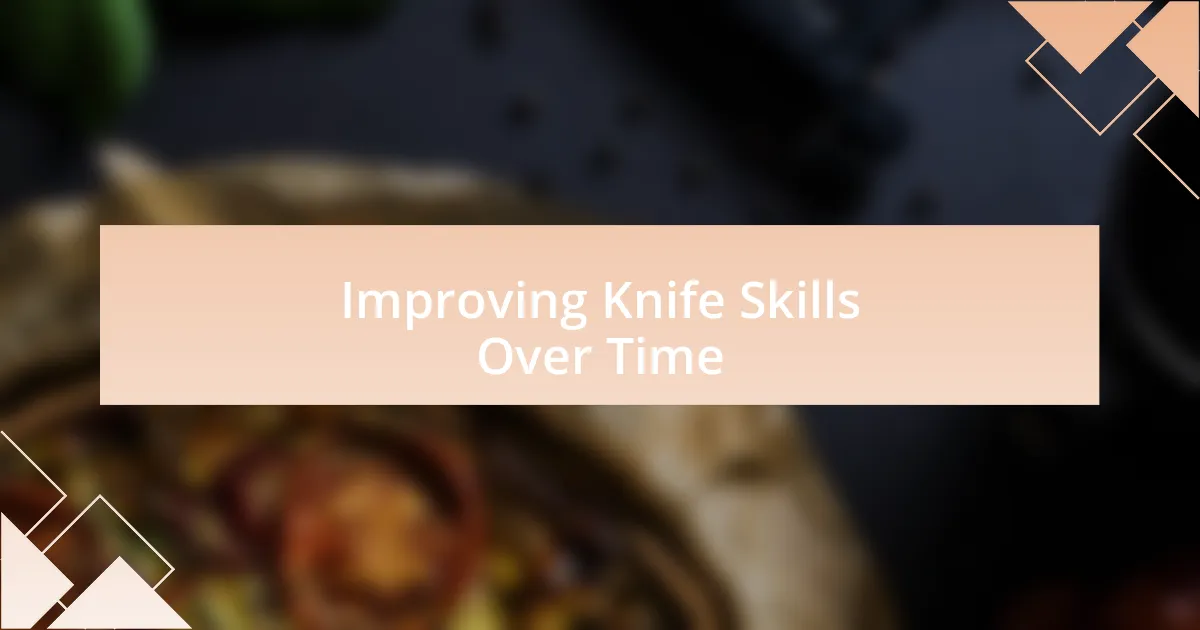Key takeaways:
- Knife skills are fundamental to culinary artistry, enhancing both efficiency and enjoyment in cooking.
- Mastering basic techniques, such as grip and chopping motions, significantly boosts confidence and precision.
- Overcoming challenges, like maintaining consistent pressure and fear of accidents, is crucial for improvement.
- Practicing smarter, through routines and seeking feedback, fosters greater skill development over time.

Understanding Knife Skills
Knife skills are more than just a basic cooking requirement; they are the foundation of culinary artistry. I remember my first cooking class, standing nervously by the cutting board, clutching a knife that felt almost foreign in my hand. It was a daunting moment, yet that fear transformed into fascination as I learned how the sharp blade could turn ingredients into beautiful creations.
As I explored different techniques, I discovered how essential it is to know the right knife for the task at hand. Have you ever tried slicing an onion with a blunt knife? It’s not only frustrating but can also lead to uneven cuts. I recall the satisfaction I felt the first time I chopped vegetables with precision, realizing that good knife skills save time and elevate the overall presentation.
Learning how to hold the knife properly made a world of difference. The grip I initially struggled with soon became second nature, and that’s when I felt truly in control. Isn’t it magical how proper technique can transform the mundane act of chopping into an enjoyable rhythm? Embracing this mastery not only boosts confidence but also ignites a deeper joy in cooking.

Importance of Knife Skills
Knife skills are crucial in the kitchen, impacting not just the efficiency of food preparation but also the enjoyment of the cooking process itself. I vividly recall a dinner party I hosted where the meal was nearly ruined by a poorly diced tomato. The uneven shapes led to messy plating, which was both disappointing and embarrassing. This taught me that mastering knife skills is essential for achieving not just flavor, but visual appeal, making every dish a feast for the eyes as much as the palate.
What I find particularly fascinating is how effective knife skills can streamline the entire cooking experience. When I finally mastered the art of brunoise – a fine dice that looks impressive yet is deceptively simple – I felt a tremendous sense of accomplishment. Isn’t it incredible how something as straightforward as cutting techniques can drastically reduce prep time while enhancing the overall quality of my meals? The joy of seeing everything come together seamlessly is one of the biggest rewards of honing my knife skills.
Moreover, the psychological aspect of learning knife skills is often overlooked. Initially, I approached knife work with trepidation, but with practice, that anxiety transformed into enthusiasm. The rhythm of slicing, dicing, and chopping became almost meditative. Have you ever felt that wave of serenity wash over you when you’re immersed in your craft? Perfecting knife skills not only builds confidence but also cultivates a deep connection with the ingredients, turning each cooking session into a joyful expression of creativity.

Essential Types of Kitchen Knives
The foundation of any well-equipped kitchen lies in understanding essential types of knives. For instance, the chef’s knife is often considered a must-have, as its versatility allows it to handle everything from chopping herbs to slicing meats. I remember the first time I picked up a good-quality chef’s knife; it felt like an extension of my hand, transforming mundane tasks into enjoyable culinary moments.
Another key player is the paring knife, which is perfect for peeling and intricate work. I often find myself reaching for this little gem when I’m preparing fruits, like coring apples or segmenting citrus. Isn’t it curious how a simple tool can make such a big difference in food prep? The control it provides allows for precision that can elevate a dish from ordinary to extraordinary.
Lastly, don’t underestimate the power of a serrated knife, especially for tasks like slicing bread or delicate tomatoes. I recall being frustrated with squashed loaves until I decided to invest in a decent serrated knife. The ease with which it glided through the crust without crushing the soft interior made me appreciate how the right knife can be the unsung hero of the kitchen. How many culinary mishaps could be avoided with a well-chosen knife in hand? It’s these small revelations that continually deepen my appreciation for each type of knife in my collection.

Basic Knife Techniques for Beginners
Mastering basic knife techniques is crucial for any beginner. I still remember the first time I tried to chop an onion; it felt like a battle against the layers! I learned that using the proper grip is key: pinch the blade with your thumb and forefinger while curling your other fingers around the handle. This grip not only gives you better control but also improves your cutting speed. Have you ever felt that rush of confidence when each slice feels just right?
Another essential technique is the rocking motion for chopping. When I first discovered this method, it was like unlocking a new level in my cooking journey. By keeping the tip of the knife on the cutting board and rocking the blade down and forward, I could speed up my preparation without sacrificing safety. It’s surprising how a simple shift in technique can change the way you experience food prep—what’s your favorite way to slice ingredients?
Finally, always remember to practice the claw grip while holding your ingredients. It took me some time to get used to curling my fingers back, but it significantly reduced the risk of accidental cuts. Each time I practiced this technique, I felt a sense of pride. It’s like building trust with your knife; the better I got, the more I began to enjoy the process. Isn’t it rewarding to see your skills sharpen not just your knife, but your overall cooking experience?

Overcoming Challenges in Knife Skills
When I first started honing my knife skills, one of the biggest challenges was learning to maintain consistent pressure while cutting. I remember the frustration of uneven slices; tomatoes would slip away, and my fingers would ache. It became clear that practice wasn’t just about frequency; it was about truly understanding the rhythm of my movements. Have you ever felt like your knife simply wasn’t doing what you wanted? Finding that fluid balance was key to boosting my confidence.
Another obstacle I faced was overcoming the fear of cutting myself. I can still picture the first time I accidentally nicked my finger—it was a jolt of panic that made me question my abilities. Rather than shying away from my knife, I leaned into the discomfort, reminding myself that every chef has a story of a small mishap. Now, I view those moments as stepping stones; they taught me to respect the blade and focus more intently on my technique. Do you think a little fear can actually help sharpen your focus?
Lastly, there were days when I felt overwhelmed by the sheer volume of techniques to master. I found it helpful to break down my practice into smaller goals, like dicing one type of vegetable at a time. It transformed my learning process from daunting to achievable. When I successfully tackled each mini challenge, it was like celebrating small victories that fueled my motivation. Isn’t it amazing how tackling one tiny piece can lead to a more satisfying whole?

Improving Knife Skills Over Time
As my journey progressed, I realized that improving my knife skills wasn’t just about practicing harder but practicing smarter. One pivotal moment was when I decided to film myself while chopping. Watching the footage was eye-opening; I noticed quirks in my grip and unnecessary movements that I hadn’t felt while working. Have you ever caught something in your technique that surprised you? This revelation made me more conscious of my actions and gradually transformed the way I approached each cut.
I also learned the importance of consistency—not just in practice, but in routine. I dedicated specific days to focus solely on slicing, dicing, or mincing. These mini training sessions became a sacred part of my culinary week. I still remember an evening filled with the rhythm of my knife hitting the cutting board; the steady sounds turned into a meditative experience. How do you find joy in the practice you undertake?
Over time, I embraced feedback from those around me. I remember inviting a friend to cook together, and they pointed out ways to improve my technique that I hadn’t even considered. It was humbling but incredibly beneficial. Engaging with others not only broadened my perspective but also filled me with a sense of community and support. Isn’t it incredible how sharing experiences can lead to unexpected growth?